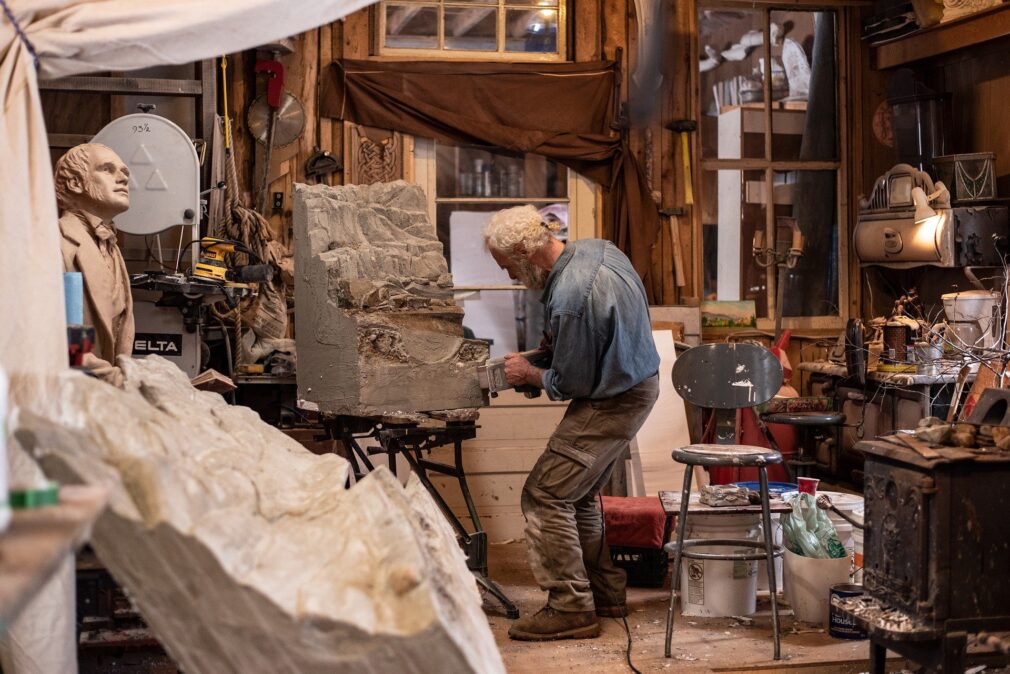The group of French Nabi artists is difficult to fit into a major art movement like Impressionism, Expressionism or Art Nouveau. Chronologically coinciding with each of these powerful currents, the Nabi artists laid out a narrow, winding, impetuous course for their own art somewhere in the middle.
“Nabi” translates from Hebrew as “prophet.” This name was suggested to the group of young artists by the poet and ancient Hebrew literary expert Auguste Casalis when they first spoke of common artistic goals in 1888. The group’s founders, Paul Sérusier, Pierre Bonnard, Jean Edouard Vuillard and Maurice Denis, believed in the revolution in art that they were making, but they regarded the title of “prophets” with healthy irony. They called Maurice Denis the “Nabi of beautiful icons,” Bonnard the “Very Japanese Nabi,” Ranson the “Even more Japanese than the Japanese Nabi,” Vuillard the “Intimate Nabi,” and Cérusier the “Nabi with a sparkling beard.” The Nabis recognized, rather, the mystical role of the artist as priest, mediator, revealing the invisible.
Julian’s private art academy, where Paul Sérusier, Maurice Denis, Jean Edouard Vuillard, Paul Ranson and Pierre Bonnard met and studied, was at the end of the 19th century the most serious rival to the Parisian Academy of Fine Arts. But this competition was not ideological – the same academics who selected paintings for the Salon taught here. All eight Impressionist exhibitions have already been held in Paris, Gauguin will soon depart for Polynesia, Van Gogh painted almost all of his Sunflowers in Arles, and at the Académie Juliane they still paint cupids, mythological and historical scenes. The future nabids are all in their early twenties, honestly following the academy’s curriculum and knowing almost nothing about the Impressionists. Until one day Paul Cérusier meets Paul Gauguin.

In 1888, Gauguin and Cérusier painted together in the town of Pont-Aven in Brittany, talking about art, applying paints of pure colors straight from tubes without mixing on the palette, and smoking cigars. Here Gauguin gives a young colleague some valuable lessons: “How do you see these trees? They’re yellow, so apply yellow, and these shadows are rather blue – so paint them with pure ultramarine. And those red leaves? Apply cinnabar.” Following these recommendations, Sérusier sketched the sketch on a cardboard lid of a cigar box, and upon his arrival in Paris he called it “The Talisman” and showed it to his friends at the Julian Academy, explaining visually the basics of Gauguin’s syntheticism and subjective view of nature. Maurice Denis recalled that both he and his friends at this moment felt “free from the yoke into which the march of copying had driven their artistic flair.
The Nabis gathered together in one of the workshops, more often at Ranson’s, and Gauguin’s lessons are joined by long conversations about the philosophy of Plotinus, reading Mallarmé’s poems and ancient Semitic literature, immersion in neo-Catholic mysticism, and an interest in the symbolist painter Puvi de Chavannes, who is mixed with decorative, allegorical and Renaissance ideals.
The author of a book about the Nabi, the British art historian Catherine Quenzley, says that the Nabis have swung to reformat the artist’s relationship simultaneously with artistic tradition, with subjective perception, and with the objective surrounding reality. The Nabi artists, she believes, focused on several important tasks: “first, a reconsideration of the relationship between feeling and imagination in an attempt to make contemporary art more viable; second, an attempt to go beyond easel painting and to think about art as part of life space; third, a dream to connect the individual to some form of social ideal or experience; and fourth, an attempt to synthesize modernity with tradition.”